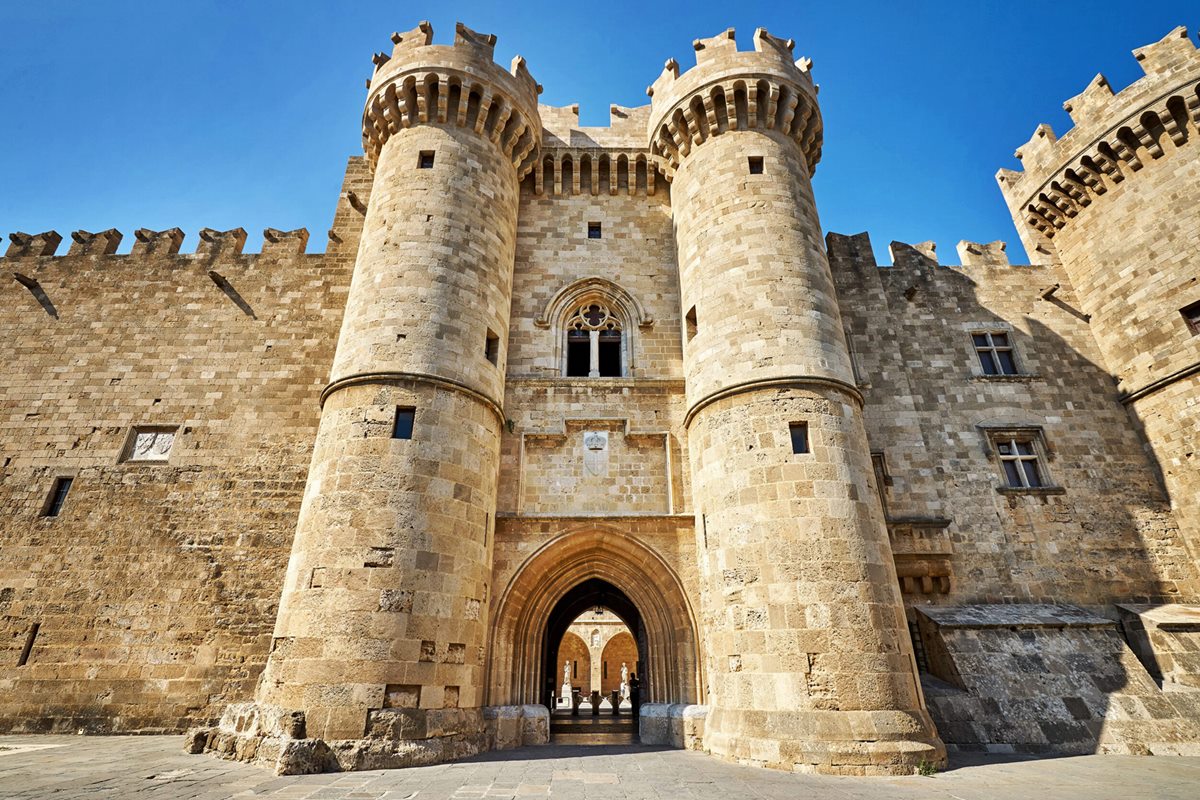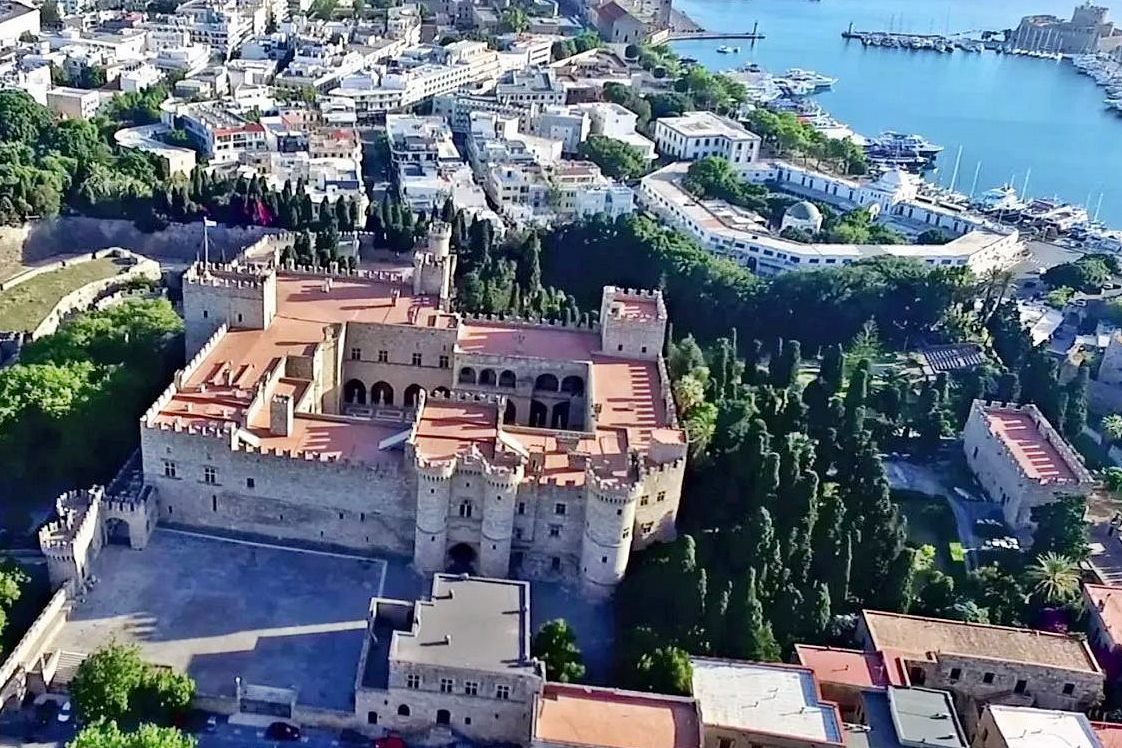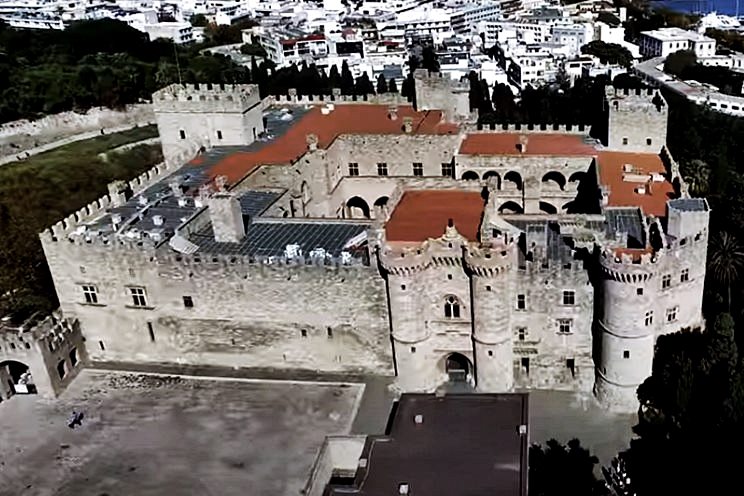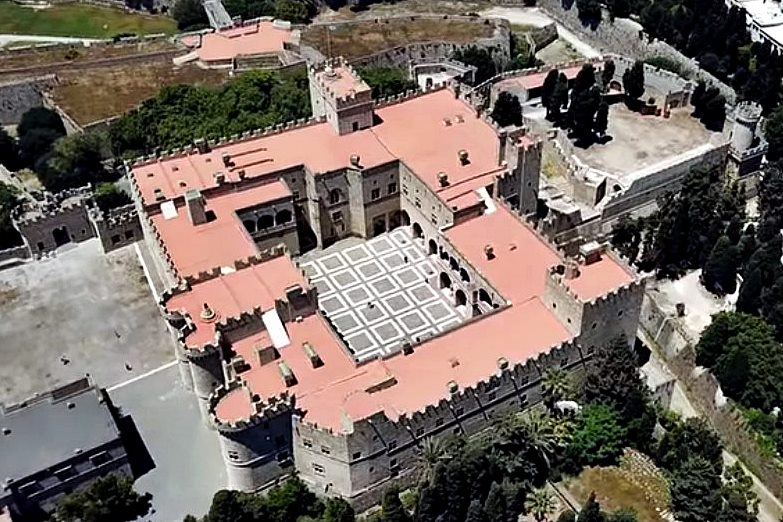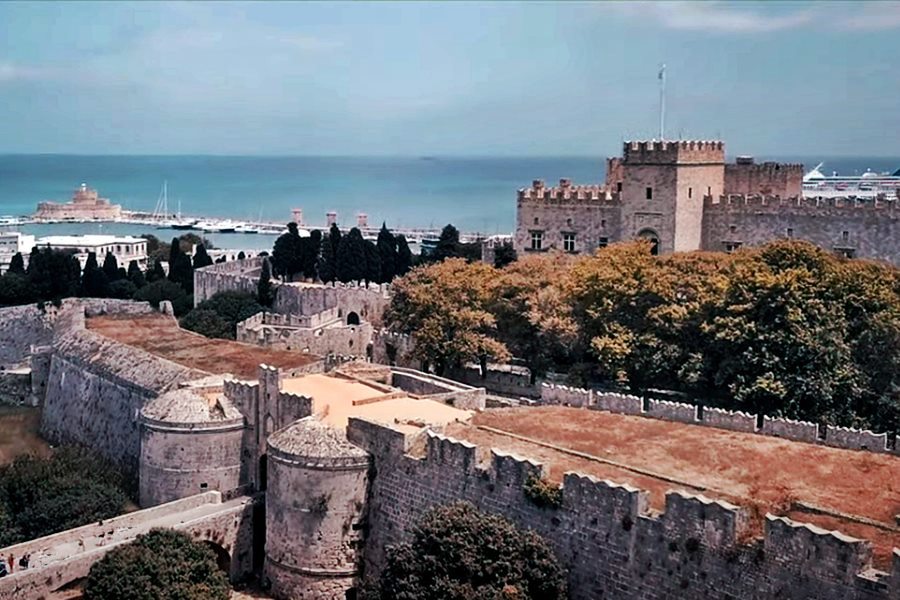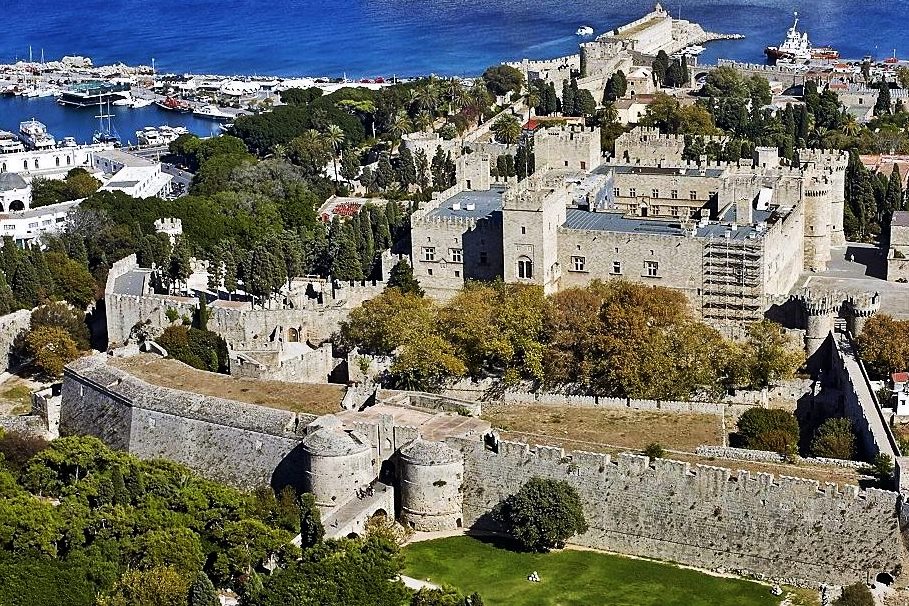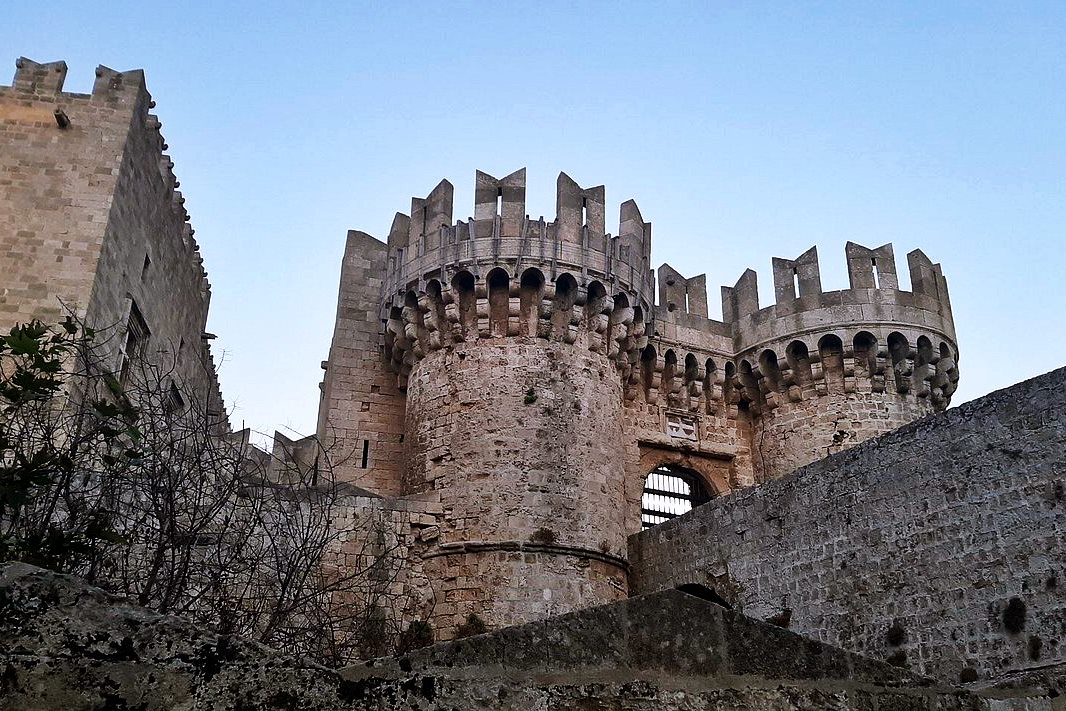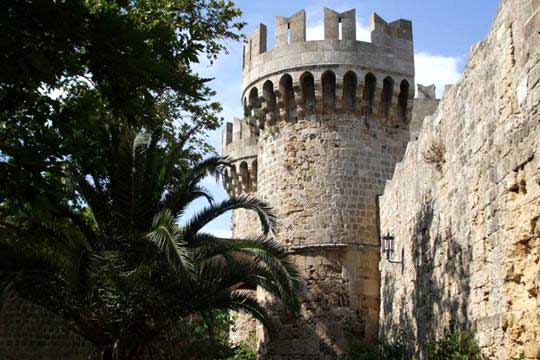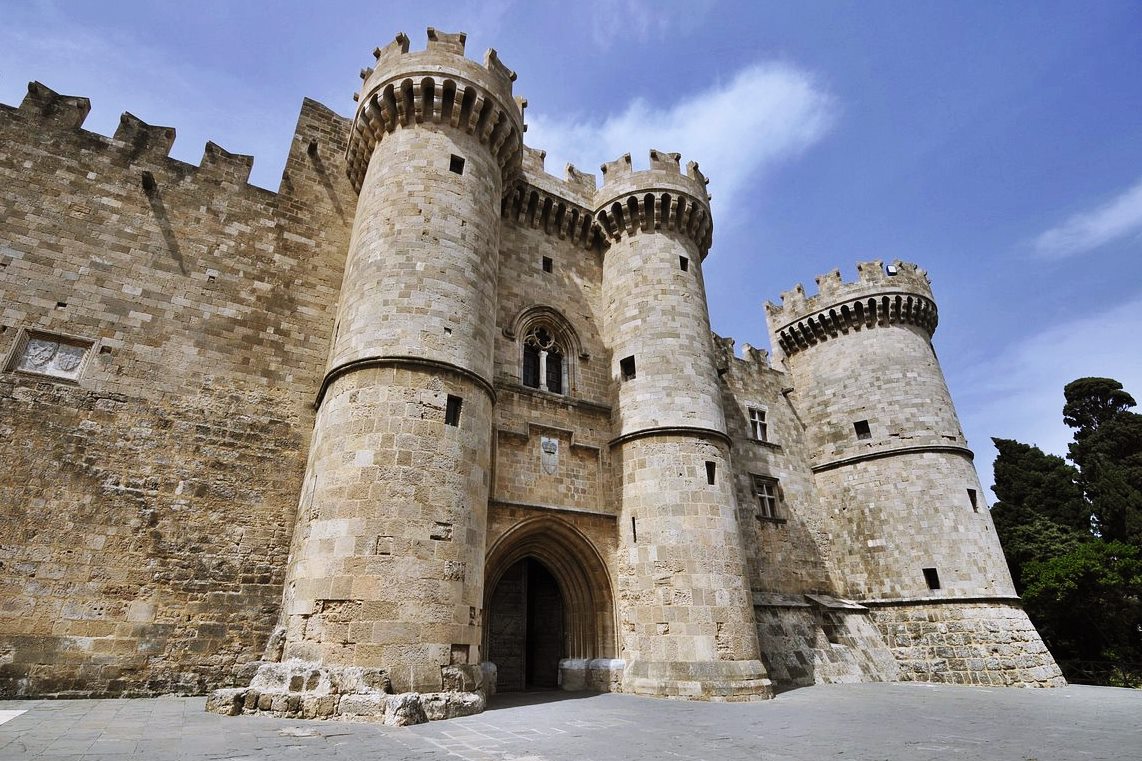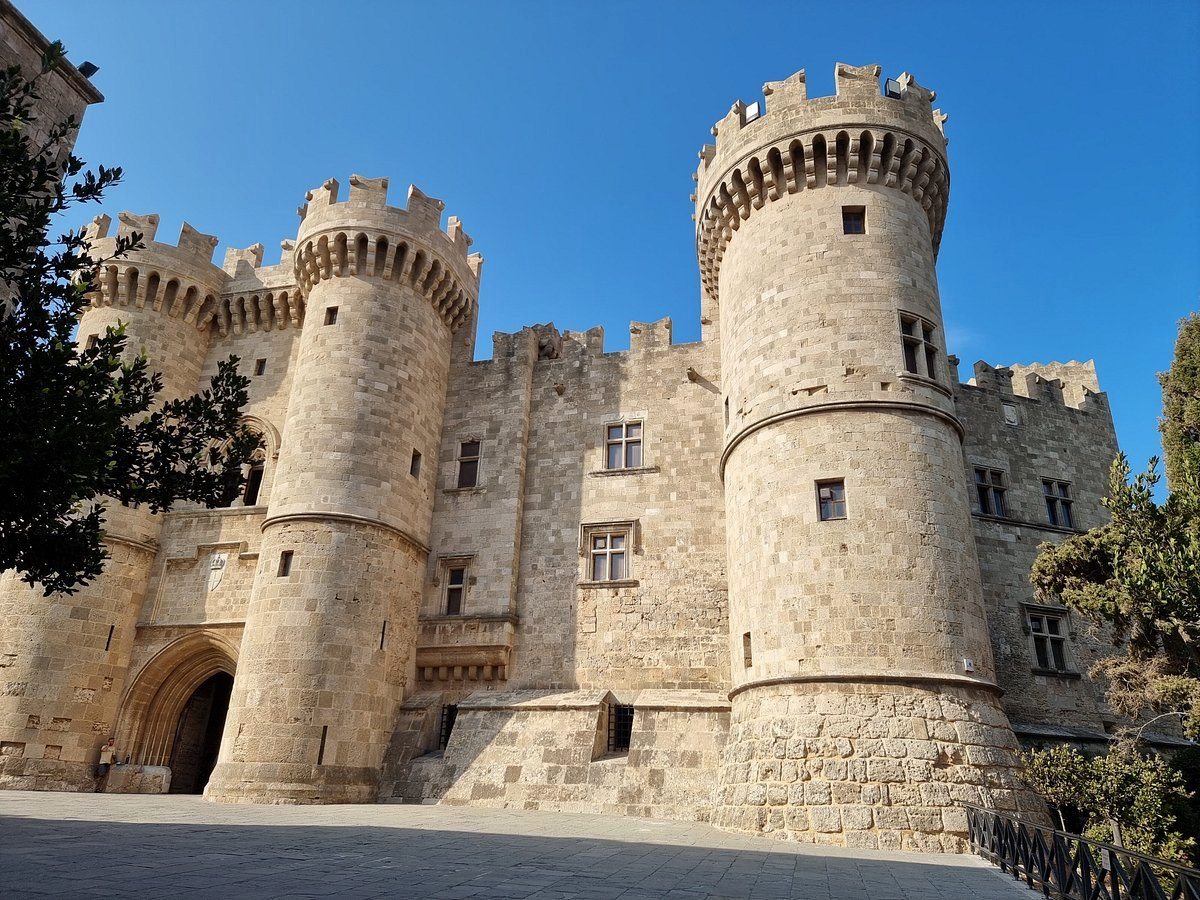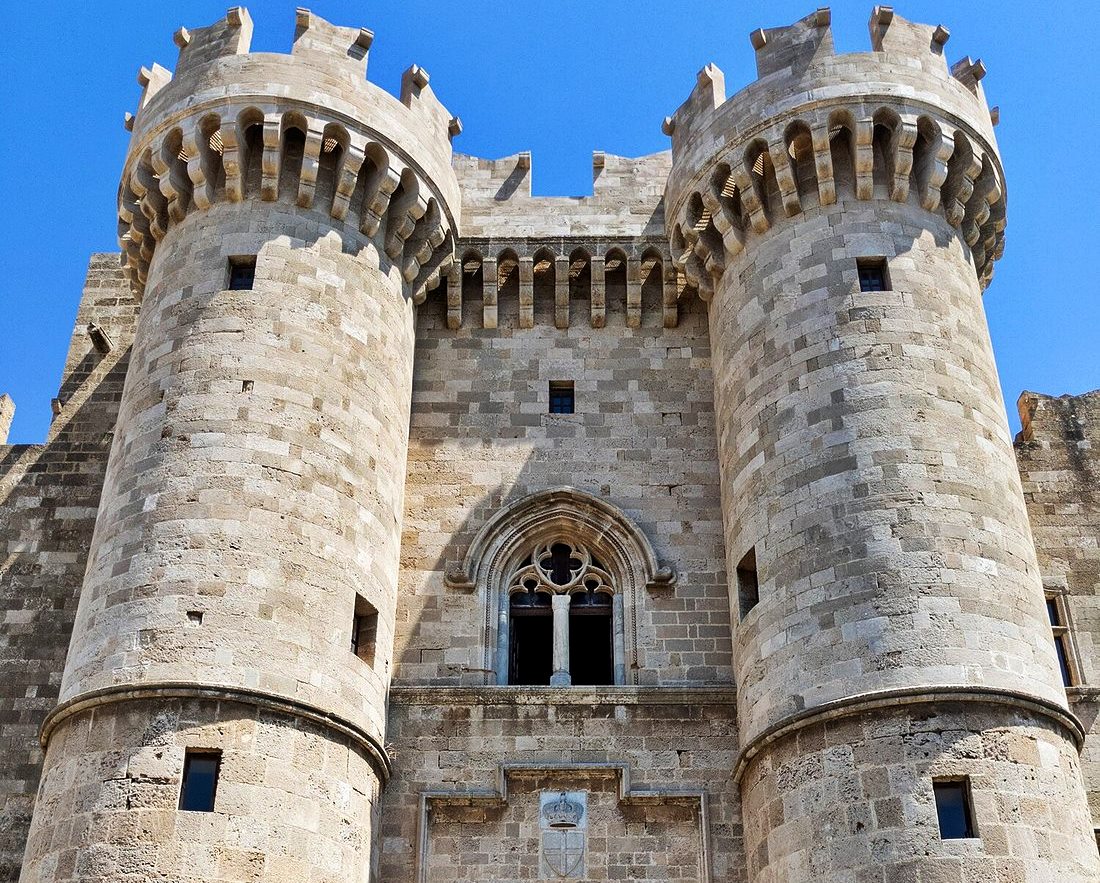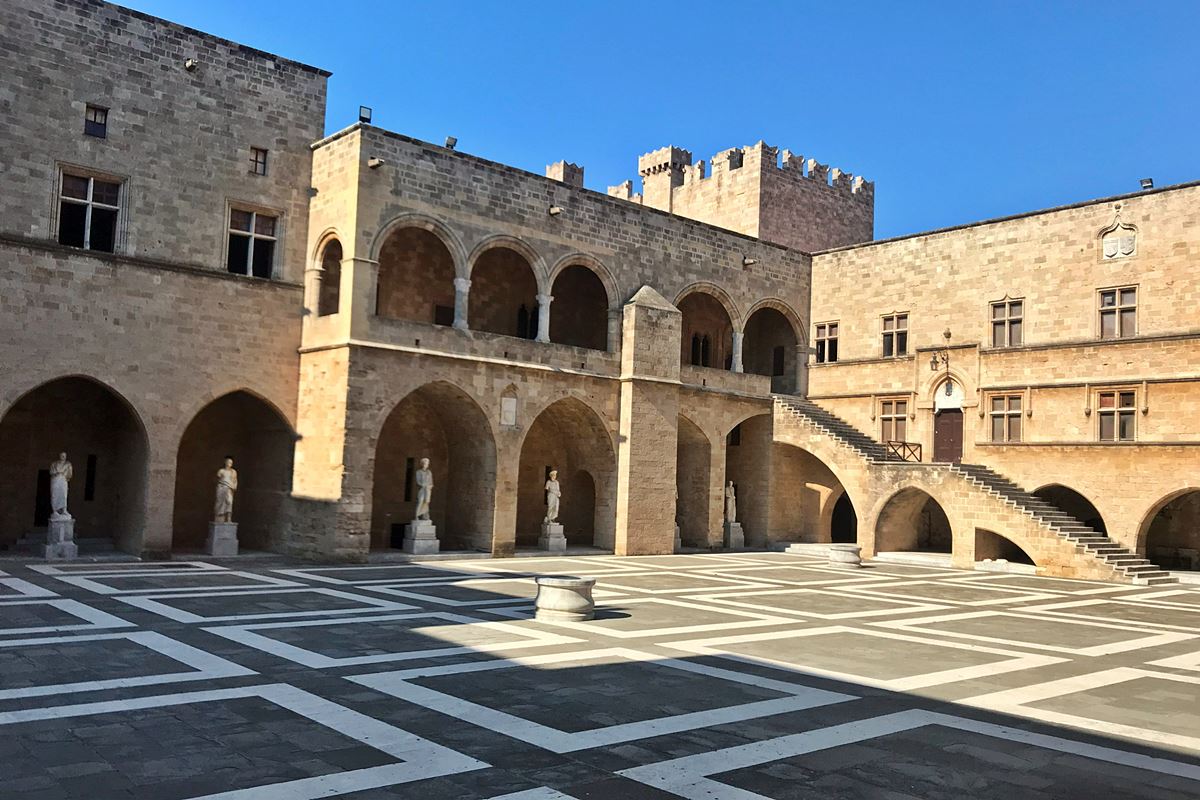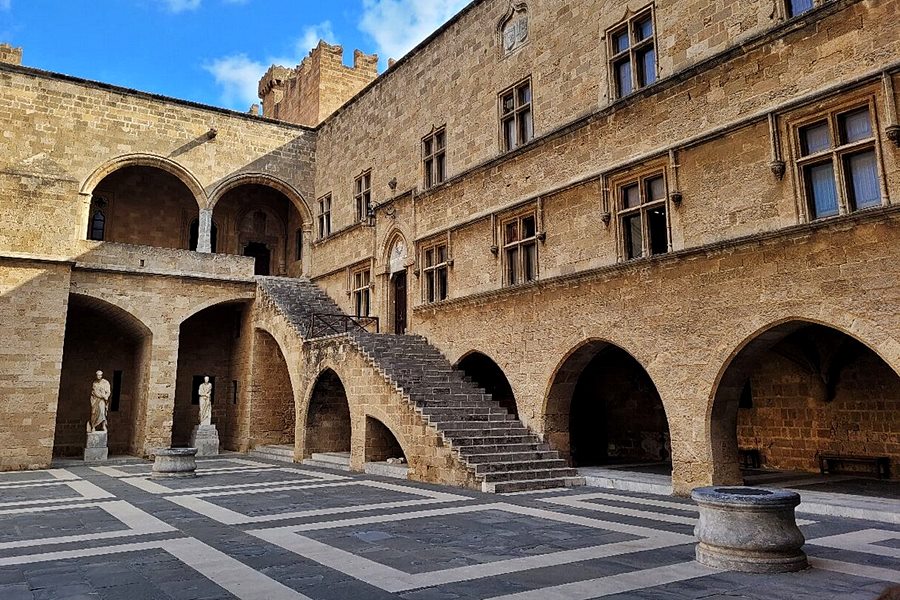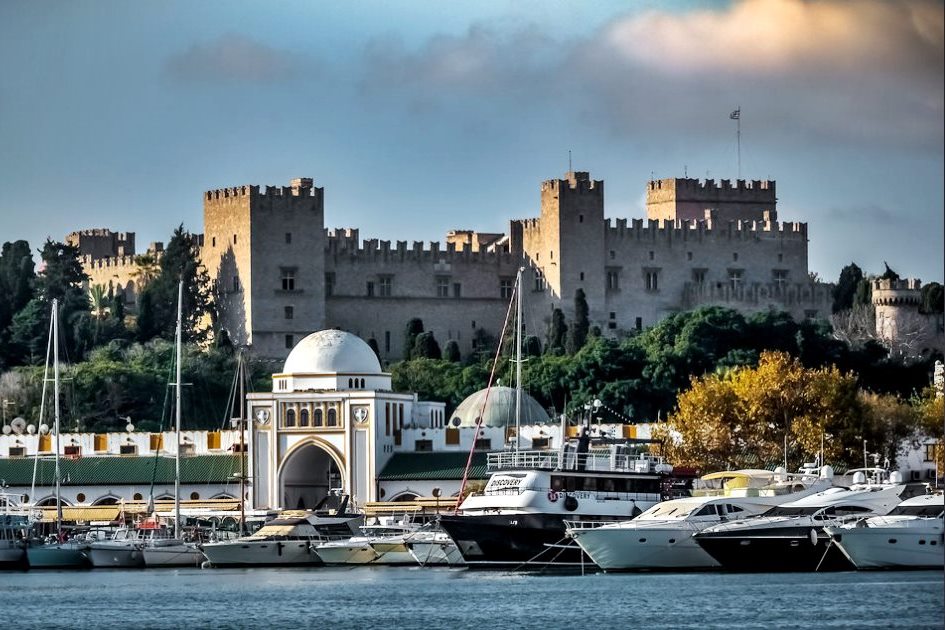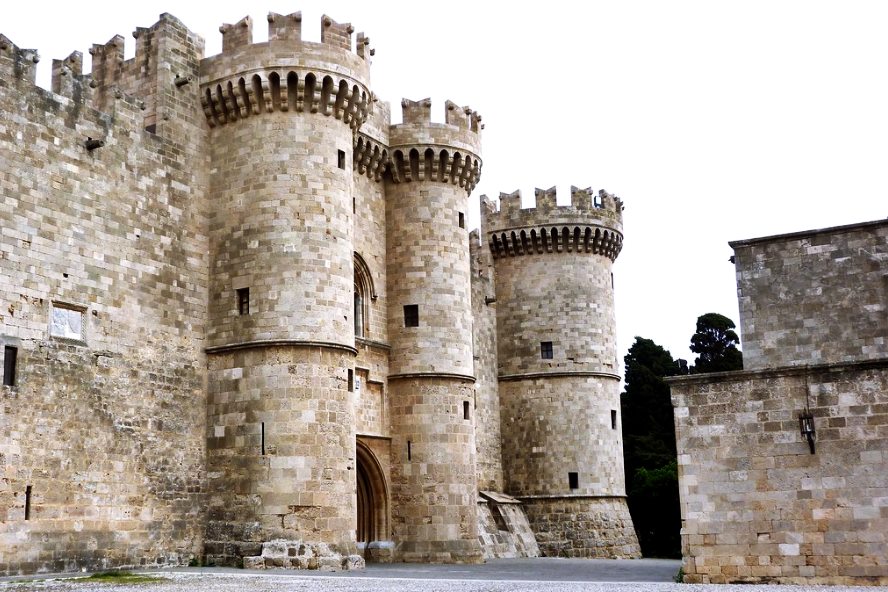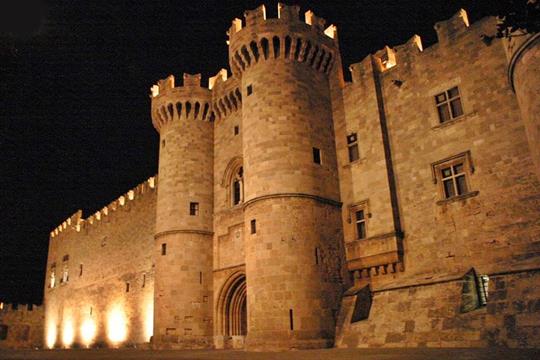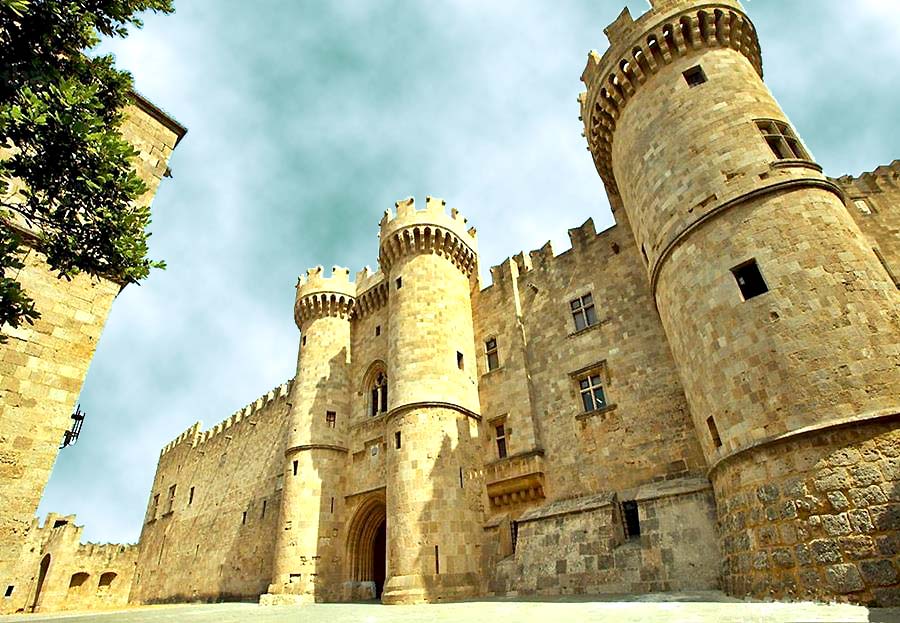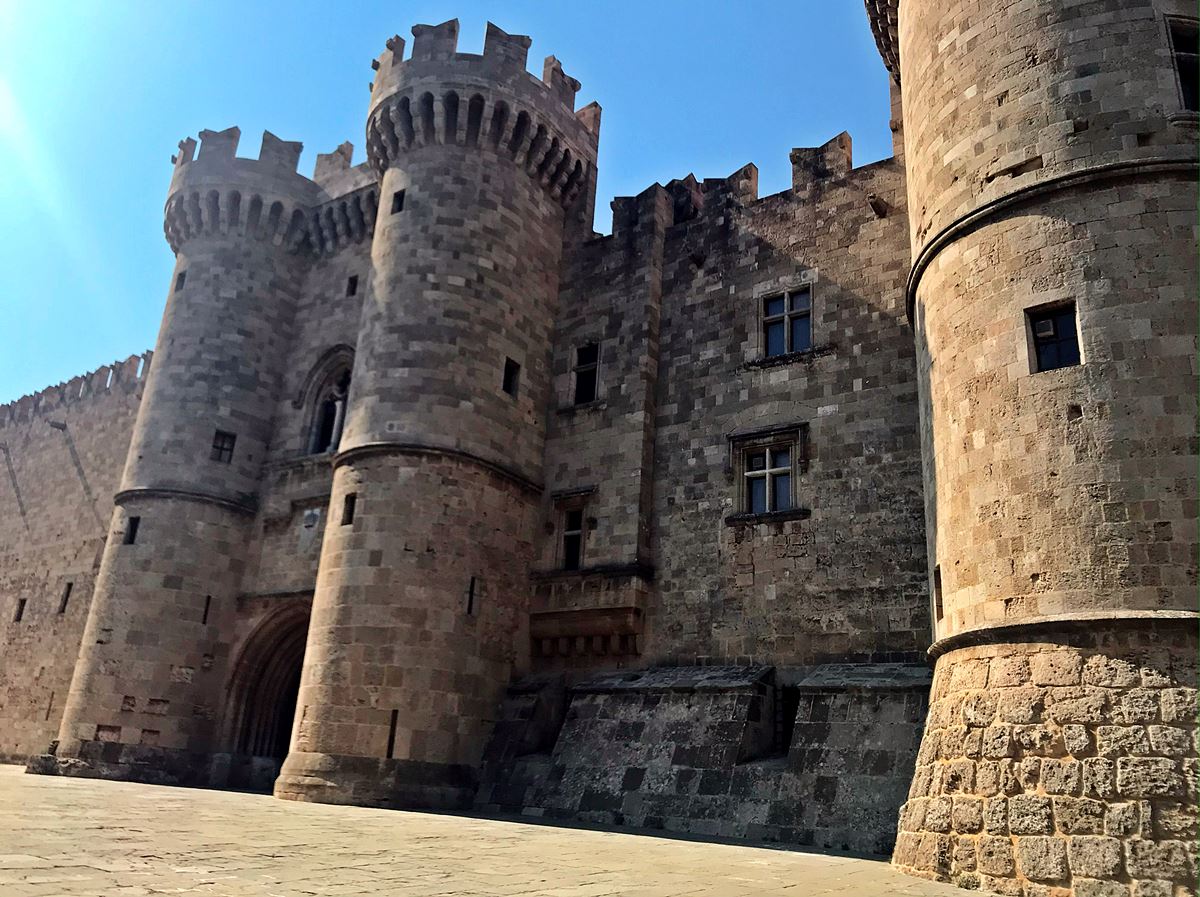Rhodes, Rhodes, Dodecanese,South Aegean
Palace of the Grand Master
| Location: |
| Rhodes, at the NW side of the medieval city |
| Region > Prefecture: | 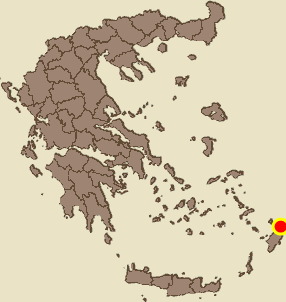 |
| South Aegean Dodecanese | |
| Municipality > Town: | |
| City of Rhodes • Rhodes | |
| Altitude: | |
| Elevation ≈ 25 m |
| Time of Construction | Origin | |
| Early 14th cent. | IOANNITE |
|
| Castle Type | Condition | |
| Fortress-state |
Very Good
|
The Palace of the Grand Master of the Knights of Rhodes is a majestic building in the NW side of the old city of Rhodes. It is the most important monument of the city.
History
The original palace was built in the 14th century by the Knights of the Order of St. John of Jerusalem, who occupied Rhodes from 1309 to 1522. It was built on a location where previously a Byzantine fort from the 7th century existed. After the island was captured by the Ottomans, the building was converted to a military fort and later a prison.
The palace was largely destroyed by an ammunition explosion in 1856. The Italians who occupied Rhodes after 1912, rebuilt the palace, in the late 1930s, in a grandiose pseudo-medieval style. So the palace we see today is not a genuine medieval structure and we are nor really sure if it has any resemblance with the original building.
On 10 February 1947, the Treaty of Peace with Italy, one of the Paris Peace Treaties, determined that the recently-established Italian Republic would transfer the Dodecanese to the Kingdom of Greece. In 1948, Rhodes and the rest of the Dodecanese were transferred as previously agreed. The Greeks converted the palace to a museum.
Structure, Fortification & Buildings
The dimensions of the building are 80✖75 m.
The entrance of the Palace is on the south side, framed by two imposing towers (photos 1,9,10,11,16,17). Inside, after the entrance, there is a large inner courtyard (photos 12,13) measuring 50✖40 m. The inner yard is decorated with statues of the Hellenistic and Roman periods.
In the time of the Knights, on the ground floor there were the auxiliary spaces, the kitchens, the warehouses and the stables, while on the upper floor there were the private apartments of the Grand Master, the ceremonial halls, the large council hall, the dining room and probably the offices of some administrative services.
Today, on the ground floor of the building are hosted two permanent exhibitions on the ancient and medieval city of Rhodes, while on the first floor one can visit, in the rooms restored by the Italians, the objects and the mosaic floors with which the space was decorated in late 1930s.
Adjacent to the palace, to its northwest, there is a strong bastion, the “Bastion of the Palace of the Grand Master” (photo 4). It is a solid rampart with an artillery platform at the top that rises 15m. over the moat. The cannons of the bastion protected not only the palace but also the entire north and northwest side of the city, as well as the port of Mandraki. It was the strongest defense point of the Medieval city of Rhodes until the end of the 15th century and until the construction of the large bastion of Agios Georgios on the west side.
The approach to the palace is from the imposing D’Amboise gate of the western walls of Rhodes (photos 5,6). In the outer courtyard of the palace there is another gate (leading to the city walls) the “gate of the cannons”, which is also protected by two medieval-type cylindrical towers (photos 7,8).
It should be noted that these cylindrical towers with kernelation that protect gates in three parts of Rhodes (at the entrance of the Palace, at the Cannons gate and at the Marine Gate of the city) were of outdated fortification architecture almost since they were built. They are all of a similar design, all preserved in excellent condition (being renovated) and all are impressive, but had a rather decorative character, in an attempt to imitate Western towers of previous centuries. They must not have played a significant role in the defense of Rhodes, especially during the devastating sieges of 1480 and 1522.
| First entry in Kastrologos: | July 2012 |
|
|
| Access |
|---|
| Approach to the monument: |
| Easy access from the city of Rhodes. |
| Entrance: |
| Ticket entrance. Limited hours. |



